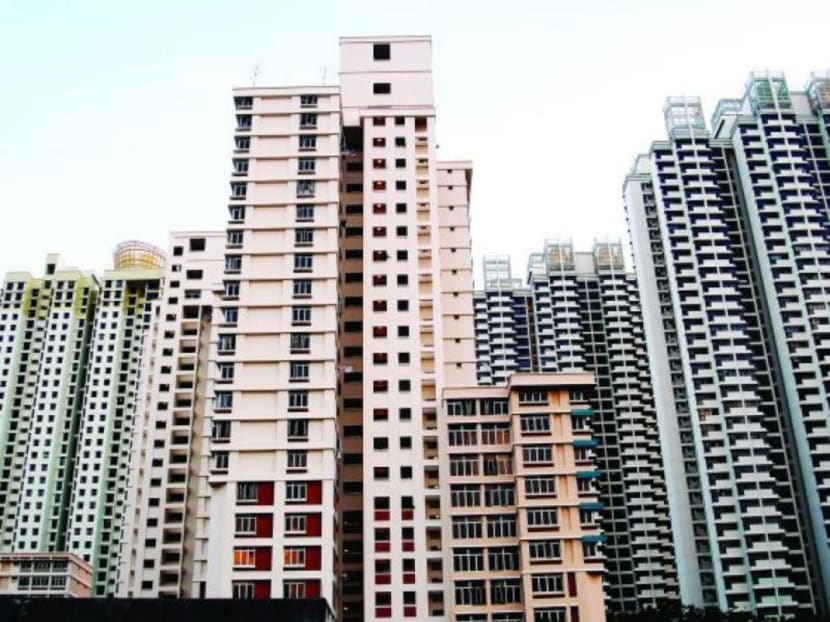Siting flats further from city ‘may widen S’pore’s social divide’
SINGAPORE — With less public housing being built in Singapore’s city centre than in the past, a paper published recently by the National University of Singapore’s Lee Kuan Yew School of Public Policy (LKYSPP) raised the question of whether this may lead to “enclaves” of wealth and social stratification.
SINGAPORE — With less public housing being built in Singapore’s city centre than in the past, a paper published recently by the National University of Singapore’s Lee Kuan Yew School of Public Policy (LKYSPP) raised the question of whether this may lead to “enclaves” of wealth and social stratification.
In the paper, titled How Should Singapore Improve Spatial Diversity and Equity In The City Centre, author Wu Wei Neng asked whether there is a need to build more public homes in central districts to foster social cohesion and promote social mobility in the population.
“There is a risk that relegating new HDB estates to the outlying areas of Singapore, while planning a glittering array of architectural gems, luxurious residences and material offerings for the well-heeled in the city centre, could alienate a large part of the population,” wrote Mr Wu, who added that the paper is not intended to “suggest correct or incorrect handling of the situation depicted”.
The issue made headlines earlier this week, when a participant at the Real Estate Developers’ Association of Singapore (REDAS) mentorship programme for students asked Social and Family Development Minister Chan Chun Sing if the Government would consider increasing interaction among social classes by building Housing and Development Board (HDB) flats on prime land such as Marina South.
The paper, published on the LKYSPP website, noted that in the past, HDB flats were built in central areas such as Tanjong Pagar and Chinatown. This has helped stave off challenges such as low-income or ethnic minority ghettos and other “extreme forms of spatial segregation”. However, the last batch of flats in the central area were completed in 1985 at Rowell Court and Rowell Road. Since then, public housing has been sited further from the city.
Mr Wu cited 2013 figures from the authorities, which showed that around 71 per cent of the completed housing in the central area were private housing units, compared with 22.7 per cent elsewhere. While there have been efforts to develop the outskirts, such as Woodlands and Tampines, high-paying jobs will still be concentrated in prime commercial hubs such as the Marina Bay Financial Centre, he wrote.
Plans to develop business hubs in the south such as Alexandra and Pasir Panjang may further tilt commercial activity towards the central region. Firms may relocate lower-end jobs elsewhere because of high land costs. As people tend to seek jobs near their homes, this widens household income differences and spatial segregation, he said.
Having a high concentration of private residences in the city may lead to the formation of exclusive communities for the well-heeled and declining social mobility as mixed-income spaces provide equal access to opportunities, he added.
However, building HDB flats in the city would mean sacrificing revenue earned from selling land to commercial developers. State intervention also interferes with market forces and may lead to depressing prices of nearby private properties. Locating public housing in pricey city-centre locations also “creates undeserved windfall gains for a select few” when these units are sold, Mr Wu noted, pointing to Pinnacle@Duxton — where resale units may fetch S$1 million and more.
Mr Chan echoed this point, saying that building HDB flats in prime locations would see buyers enjoying a windfall when they sell their homes at a high price in resale markets at the expense of taxpayers.
Mr Wu also noted that the majority of Singapore’s resident population live in HDB estates outside the central area and these estates are socioeconomically mixed.
Property analysts were mixed on having more public housing in the city. Mr Chris Koh, director of property consultancy Chris International, felt public housing estates at the fringe of the city centre, such as Toa Payoh, already caters to a degree of social mixing. He suggested building a better transport network to ensure accessibility to the city centre, while plans to create more jobs across the island will help lift other segments of society.
But Mr Colin Tan, director of research and consultancy at Suntec Real Estate, felt there is a need for a mix of housing types in every area.
NUS sociologist Tan Ern Ser felt siting HDB flats in prime areas would “incur more social and economic costs than social benefits”, such as resentment when those able to obtain these flats make large profits when they sell their homes. Schools and religious activities are other ways to bring different social classes together, he said.







